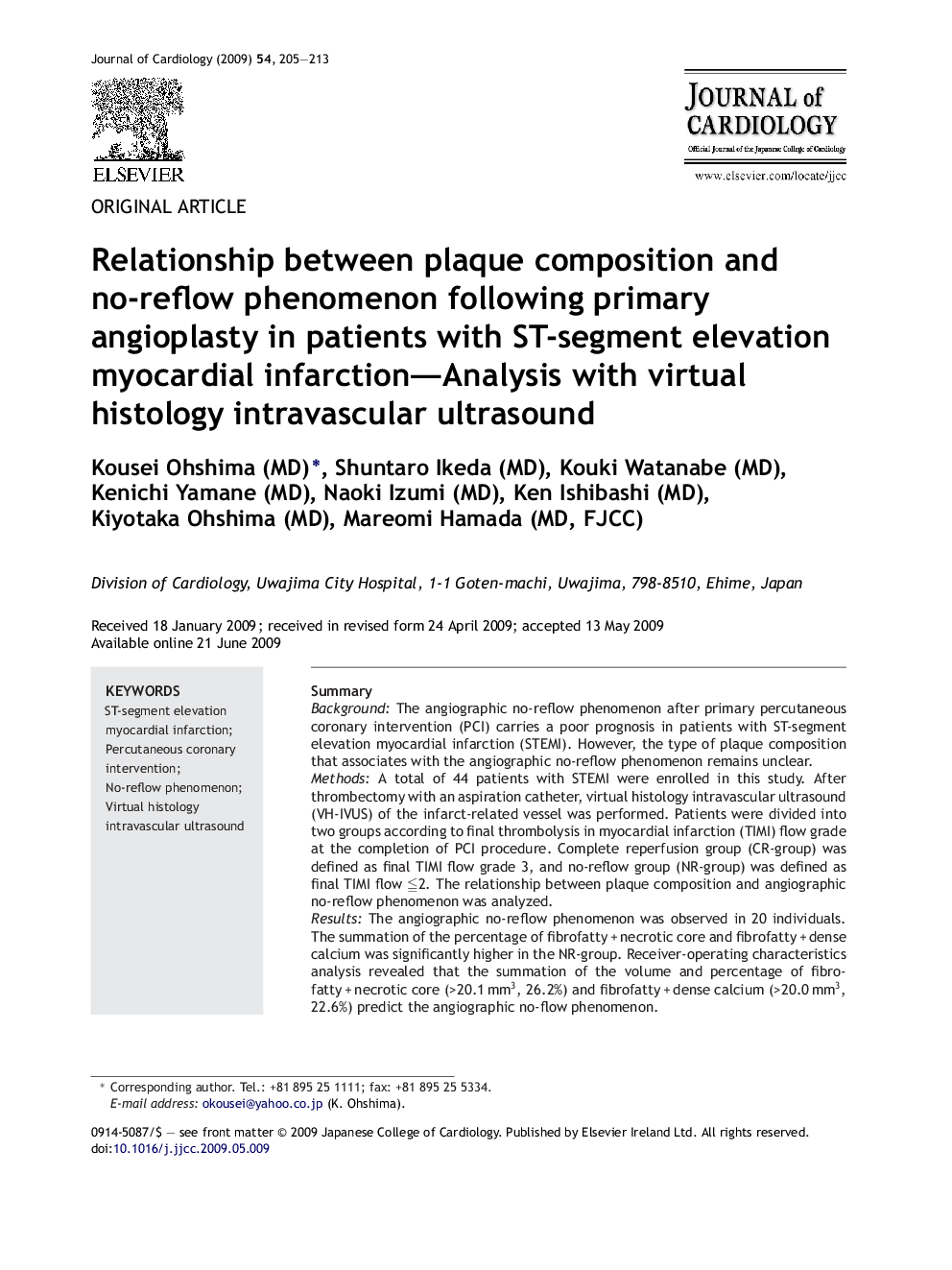| Article ID | Journal | Published Year | Pages | File Type |
|---|---|---|---|---|
| 2963681 | Journal of Cardiology | 2009 | 9 Pages |
SummaryBackgroundThe angiographic no-reflow phenomenon after primary percutaneous coronary intervention (PCI) carries a poor prognosis in patients with ST-segment elevation myocardial infarction (STEMI). However, the type of plaque composition that associates with the angiographic no-reflow phenomenon remains unclear.MethodsA total of 44 patients with STEMI were enrolled in this study. After thrombectomy with an aspiration catheter, virtual histology intravascular ultrasound (VH-IVUS) of the infarct-related vessel was performed. Patients were divided into two groups according to final thrombolysis in myocardial infarction (TIMI) flow grade at the completion of PCI procedure. Complete reperfusion group (CR-group) was defined as final TIMI flow grade 3, and no-reflow group (NR-group) was defined as final TIMI flow ≦2. The relationship between plaque composition and angiographic no-reflow phenomenon was analyzed.ResultsThe angiographic no-reflow phenomenon was observed in 20 individuals. The summation of the percentage of fibrofatty + necrotic core and fibrofatty + dense calcium was significantly higher in the NR-group. Receiver-operating characteristics analysis revealed that the summation of the volume and percentage of fibrofatty + necrotic core (>20.1 mm3, 26.2%) and fibrofatty + dense calcium (>20.0 mm3, 22.6%) predict the angiographic no-flow phenomenon.ConclusionThe fibrofatty-rich component with necrotic core or dense calcium derived from VH-IVUS is closely related to the angiographic no-reflow phenomenon observed in primary PCI.
